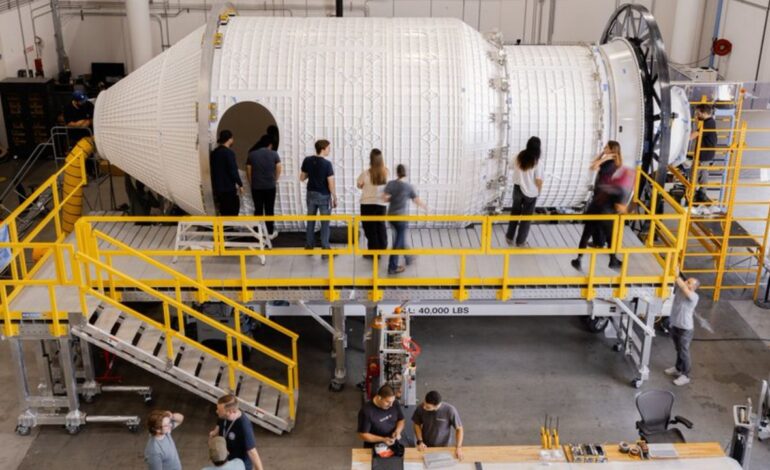Vast Prepares for 2026 Launch of Haven-1 Private Space Station

Vast is nearing the completion of its Haven-1 private space station, with plans to launch in 2026. The California-based startup has recently finished the final weld on Haven-1’s primary structure, marking a significant milestone in the project. Following this, the structure has been painted, and the company is now preparing to integrate key components, including a hatch and a domed window, as it moves towards its goal of establishing a private space station in low Earth orbit (LEO).
Haven-1 is set to be launched aboard a SpaceX Falcon 9 rocket, and at approximately 31,000 pounds (14,000 kilograms), it will be the largest spacecraft to be lifted by this rocket. The space station is designed to accommodate up to four short-duration astronaut missions over its three-year operational period, with crews spending around 10 days at a time aboard Haven-1. This equates to a potential total of 160 astronaut days.
According to Drew Feustel, Vast’s lead astronaut and a former NASA astronaut, the launch of Haven-1 represents a pivotal moment in human spaceflight. Speaking at the 76th International Astronautical Congress (IAC) in Sydney, Australia, he noted, “If we stick to our plan, we will be the first standalone commercial LEO platform ever in space with Haven-1, and that’s an amazing inflection point for human spaceflight.” The launch is tentatively scheduled for the second quarter of 2026, with the Falcon 9 already booked for the mission.
Founded in 2021, Vast has quickly expanded to around 800 employees. Most of its hardware is developed in-house, with only solar arrays and thrusters sourced externally. Feustel reflected on the company’s rapid progress, stating, “When I joined in December 2023, we were still deciding between stainless steel and aluminum. Now, less than two years later, the primary structure is welded.”
Vast’s ambitions extend beyond simply launching a private station. Haven-1 aims to revolutionize human spaceflight by enhancing the experience for astronauts. The design prioritizes comfort and psychological well-being, distinguishing it from the utilitarian International Space Station (ISS). To this end, Vast has incorporated “Earth tones” in the aesthetics of Haven-1 and has engaged a former food developer from Campbell’s to innovate astronaut cuisine. Additionally, the company has created an inflatable sleep system that allows crew members to adjust pressure for a simulated gravity experience, moving away from the traditional sleeping bag approach used on the ISS.
As the company prepares for Haven-1’s launch, it is also laying the groundwork for future projects. Haven-2 is envisioned as a more advanced, modular space station that could potentially replace the ISS, which is scheduled for deorbiting in 2030. This next-generation station will feature a second docking port, increased volume, fixed solar arrays, and additional windows. Its modular design will allow for the attachment of cargo and future nodes, including a central node intended for launch via SpaceX’s Starship, which is currently under development.
Feustel explained the significance of Haven-2, saying, “Haven-2 will be stretched in length, add another docking port, and become more modular. We can attach cargo supply while the crew is there.” The larger modules will require launch on the SpaceX Falcon Heavy rocket, equipped with elongated fairings. The central node, however, will only be able to launch on the Starship, which will be an eight-meter-diameter class structure.
Haven-1 is fully funded and its launch is secured. In contrast, Haven-2’s design relies on the NASA Commercial LEO Destinations (CLD) program. Feustel emphasized the flexibility of Vast’s architecture, stating, “Once we know the expectations, we can head down with full focus — our architecture is flexible enough to adapt.”
The overarching vision of Vast focuses on long-term living in space, with aspirations for artificial gravity. Eva Behrend, Vast’s vice president of communications, articulated the company’s mission: “We think of ourselves as building destinations in space — places for people to live, work, and look back at Earth.” With Haven-1 and Haven-2 poised for development in low Earth orbit, Vast’s ambitions extend far into the cosmos.






